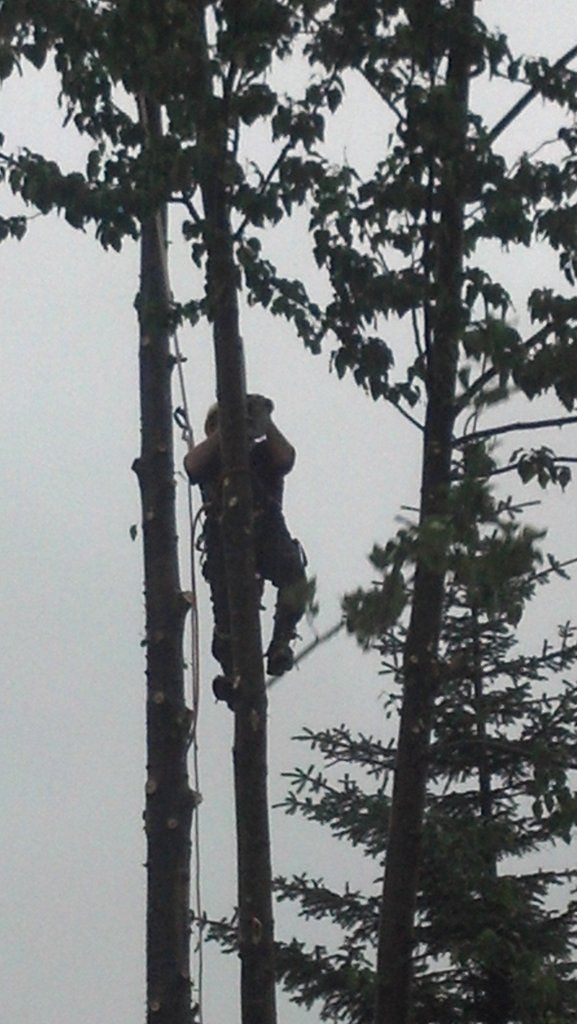dwerden
ArboristSite Lurker
Recently got buckingham spurs with t pads, im practicing on a few poplar trees that need to come down, they areare about 10" diameter.
The problem I'm having is they all have a slight lean to them away from a cedar hedge, I realize you are supposed to climb the top side of the tree but I would literally have to be inside a hedge to do so. Climbing the sides of the trees, it wants to force me on the bottom side of the tree and I can't seem to stay straight onto the tree. The only thing that seems to help is having my flipline up as high as possible . I see people say to doi le wrap it but I'm thinking that's only for when your stationary doing a cut as I can't see how you would actually climb like that .
Also, like I said the trees are about 10" diameter, my spurs are maybe 2-3 inches apart from the center of the tree. Does this sound right ? I've got my toes touching the outside of the tree and my feet are about 45 degrees from eachother.
Do you actually kick in the spurs or just set them where you want and apply weight on them to get them in the tree, I am climbing a soft (i think poplar) so they are going in probably 5/8s of an inch. Everything sound about right?
The problem I'm having is they all have a slight lean to them away from a cedar hedge, I realize you are supposed to climb the top side of the tree but I would literally have to be inside a hedge to do so. Climbing the sides of the trees, it wants to force me on the bottom side of the tree and I can't seem to stay straight onto the tree. The only thing that seems to help is having my flipline up as high as possible . I see people say to doi le wrap it but I'm thinking that's only for when your stationary doing a cut as I can't see how you would actually climb like that .
Also, like I said the trees are about 10" diameter, my spurs are maybe 2-3 inches apart from the center of the tree. Does this sound right ? I've got my toes touching the outside of the tree and my feet are about 45 degrees from eachother.
Do you actually kick in the spurs or just set them where you want and apply weight on them to get them in the tree, I am climbing a soft (i think poplar) so they are going in probably 5/8s of an inch. Everything sound about right?
Last edited:



























































